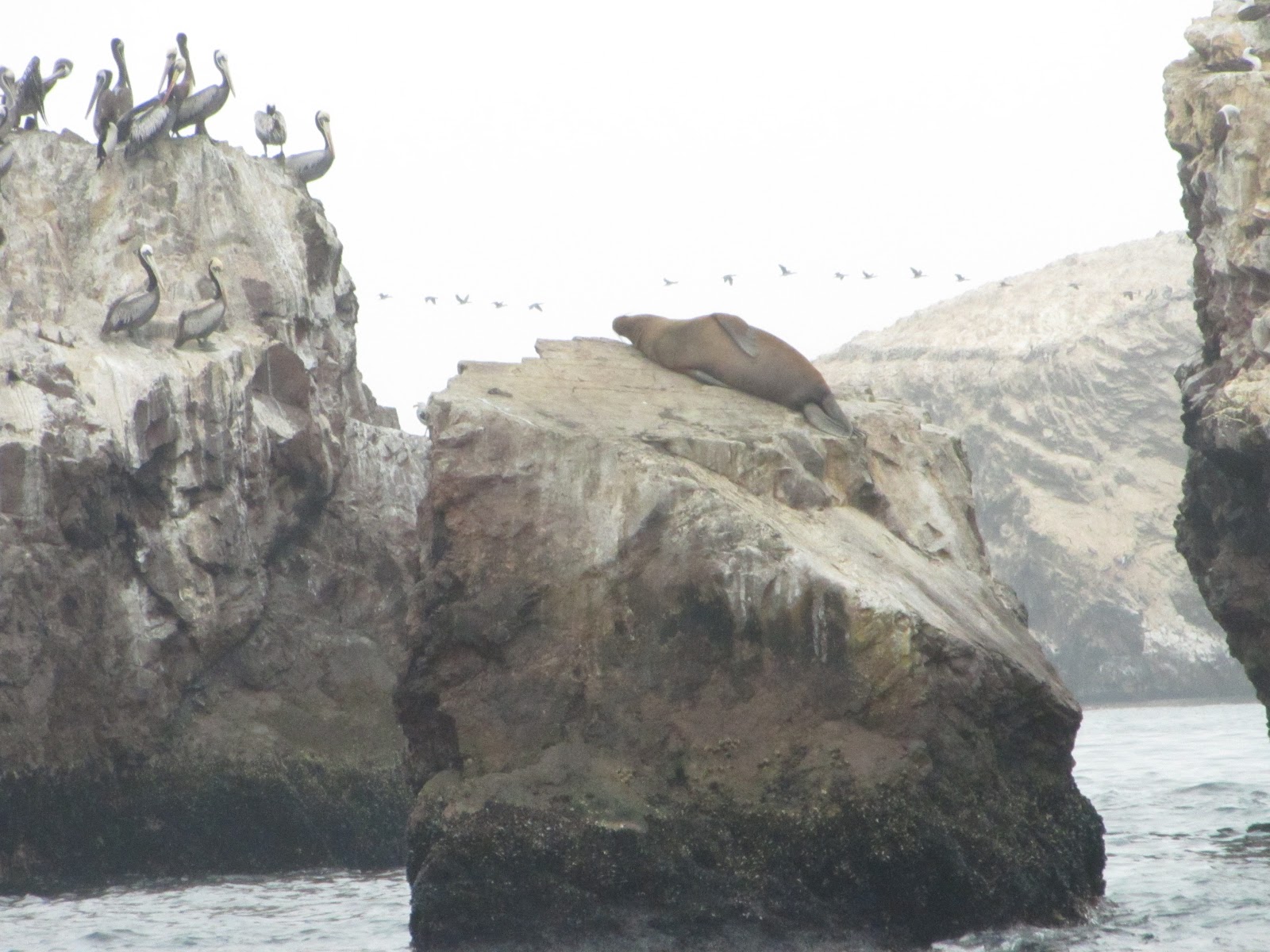This is hurriedly being done, so forgive, please. We're off to Paracas for our final night, after a visit to local wineries and factories. I'm not sure we'll have decent internet again before we leave, so want to get these amazing birds out there before we depart. Can't wait to be back in the states!
The Paracas National Reserve is huge (139,000 square miles), encompassing tropical dessert (an extension of the Atacama desert in northern Chile), and with 2/3 of its area comprised of ocean and coastal habitat. We boated out to the Ballestas Islands (aka Guano islands, as they're literally covered in what was once quite profitable bird poop). The area has hundreds of thousands of sea birds -- mostly three varieties of cormorants (neotropic, red footed, Guanay), Peruvian pelicans, Peruvian boobies, Inca terns and Humboldt penguins -- and thousands of sea lions. Then we drove around in the desert area, vast expanses of nothing but sand. The area gets 20 mm of rain a year, almost always in the form of mist. We caught the rain. Not an inconvenience.
 |
| The jelly fish near the shore were gorgeous, and the size of manhole covers. |
 |
| But hard to photograph in the morning sun. |

 |
| Waiting cormorants and pelicans. |
 |
| This candelabra (barely visible in the mist, and in the photo) is like the famous Nazca lines (which we didn't see). It's on one of the Ballestas Islands. |
 |
| Rock island, littered and by birds -- a mix of birds and their droppings; the ones that show up whitest are the Peruvian boobies.. |
 |
| Humboldt penguins, by the thousands. |
 |
| Beautiful rocks and water, covered with birds -- see the ruffle along the top -- a Pelican ruffle. |
 |
| Lucky to wee this red footed cormorant, much rarer than the other two. |
 |
| Peruvian pelicans of various ages. |
 |
| Such beautiful beak coloring. |
 |
| More and more and more Peruvian pelicans. Sigh. Healthy population. Sea lions on the rocks below the pelicans. |
  |
| Inca terns -- so beautiful. |
And thousands of sea lions. Big, little, mostly sleeping, resting, hanging out -- although there were probably many more in the water that we didn't see. There was an hours' old baby and mom, blood still apparent, delineating their relationship through sound (to make theirs recognizable voices.)
 |
| A little one, not the newborn. |
 |
| Sea lions like to play, and our guide told us this one was taking seaweed up to play with (they don't eat it, nor sleep on it.) |
 |
| Sleeping, odd position. |
  |
| Pair playing in the water. Turkey vulture, likely waiting for a dead sea lion baby or its placenta. |
 |
| Don't know how this sea lion got up there, but resting. |
 |
| They still farm guano from here, once every seven years, so as not to seriously disturb the residents. This pier is for their use, but mostly used by the birds. |
 |
| The famous headless Peruvian booby. |
 |
| On our lunch stop, a relatively tamed or hungry pelican. |
 |
| Our lunch stop, an area that had been wiped out by the tsunami of 2007, recovering . . . and delicious! |
 |
| The Reserve, 140K square miles of this, nothingness. Fascinating. |


























No comments:
Post a Comment